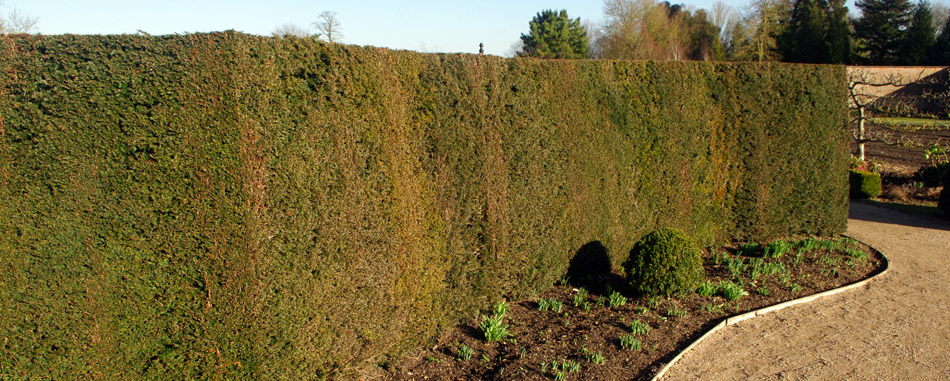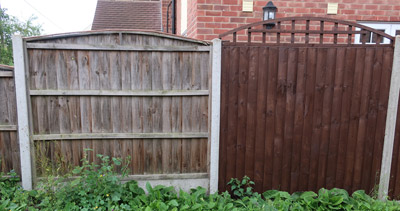Fences and Hedges for Privacy and Protection From Wind and Noise
We all need a barrier around the garden and most of us go for a fence or hedge, what are the pros and cons of each and how do we make them more effective?
A Basic Fence
This is relatively quick to put up and provides an instant barrier, it should always have a gravel board at the bottom so it doesn't sit on the soil and can have a section of trellis at the top to provide extra privacy but also to allow (non-clinging) climbing plants to grow through and soften the hard expanse of wood. Closeboard or feather edge panels with vertical boards are stronger and better than the commonly used cheapest option of horizontal overlapping waney-edge boards.
Wooden posts look better than concrete posts but don't last as long, they will need replacing or repairing in time. Wooden fence panels can be wind rattled in the slot in with concrete posts unless wedged, they may also pop out in strong winds as the panel flexes but they can't be screwed to the post as they can into a wooden post.
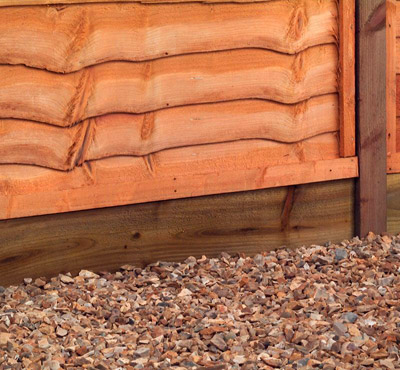
Waney-edge wooden lap fence
panels with wooden posts and
gravel board.
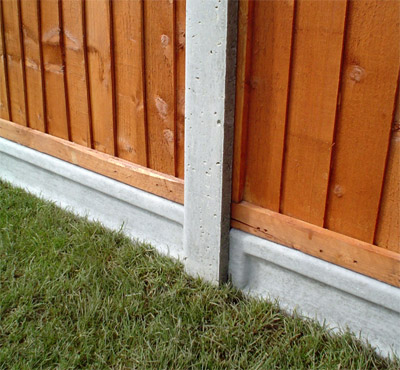
Closeboard wooden fence
panels with concrete posts and
gravel board.
A Resilient Windproof Barrier
This can be achieved in several ways, the first is simply by using the strongest panels and extra long posts that are properly fixed in place with concrete or post-fix. For a particularly exposed area where fences have been damaged by wind in the past this may not be enough or may be too expensive.
Another option is fence panels that don't present a solid barrier to the wind, allowing it to blow through gaps reduces the force of the wind quite significantly. Such panels can be partially see-through with visible gaps or of overlapped construction with boards alternately fixed to either side of spacers vertically or horizontally so they still provide privacy while allowing air to freely pass through.
If privacy is less of an issue a picket-style fence with alternate and equally sized gap and board will be much more resistant to damage by strong winds.
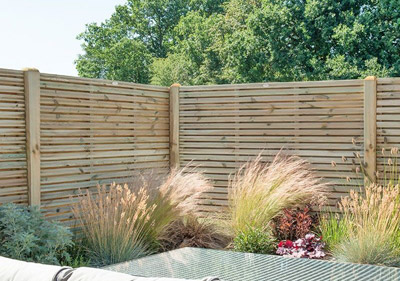
Slatted wooden fence panels
with gaps to allow the wind to blow through.

Vertical boards
can be placed in situ to allow the fence to follow a
slope without stepping the panels or for use on uneven
ground.
Better still though as a wind barrier is a hedge which will virtually never be blown down or otherwise damaged by the wind. A hedge will filter the wind rather than forming a solid barrier. Behind the hedge it will be calmer whereas a solid barrier such as a fence will deflect the wind over the top and be less effective as a shelter device while itself being more vulnerable, hedges will bend with the wind absorbing some energy in the process rather than offering direct resistance.
More on hedges and hedging plants
If you have the space but not the time, a fence + hedge will give the best wind-proof barrier and be effective immediately when the fence goes up, you will have to wait a few years for the hedge to catch up but it will provide some defence for the fence straight away. Put the hedge on the side of the prevailing winds with the fence behind.
A Noise Barrier
Noise proofing is best initially carried out with a solid fence, though this can be significantly improved upon by planting an evergreen hedge on the side of the fence where the noise is coming from. Laurels are ideal for this as they have large stiff leaves to reflect and absorb the sound, are fairly quick growing and can be trimmed to whatever height you want them, higher (much higher if you want) than the fence.
Hedge or fence?
Advantages of a hedge
- An attractive living boundary that may change with the seasons
- Height easily variable to suit requirements
- Can be made intruder-proof by selection of plants
- Windproof, filter the wind rather than make it go round
- Should last for decades, even centuries without too much effort
Disadvantages of a hedge
- Requires regular maintenance, at least annual trims
- Takes time to get established
- Wider than a fence and need access for trimming, so need more space
- "Greedy" hedging plants often prevent other plants growing close by
Advantages of a fence
- Instant barrier, no waiting.
- Can plant right up to the fence
- Fence can be used as a support for climbers or shrubs
- Effective noise barrier ( from roads etc.)
Disadvantages of a fence
- Unattractive (subject to opinion!)
- More prone to wind damage than hedge, not such a good wind filter
- Will need replacing long before a hedge does
More on hedges and hedging plants
To Paint or Not to Paint
Left as they come, wooden fence panels will fade in time to a natural grey colour. There are lots of big tubs of "fence colour" that are quite actively marketed, they are mainly cosmetic and will quickly fade, flake off or both and add little to the life of the fence which is dependent far more on the posts and how wind resistant it is.
Once you start painting the fence you tie yourself into doing so every few years or it looks much worse than it would if you hadn't started in the first place. Wooden fence panels are usually made from dip or even better, pressure treated wood whereby a more effective preservative than in fence paint is applied by dipping the whole fence panel or by being forced into the wood under pressure during manufacture and where it stays even though the wood surface fades in colour.
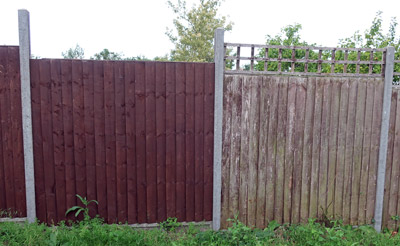
Repainting a fence panel
after a few (3-4) years. The panel on the right has
almost completely lost the fence paint it was given
when first installed but started looking tatty after
about a year. The one on the left has now been painted
for the second time. These panels can be slid out of
the groove in the concrete posts for painting, though
it is far from easy as the whole panel needs to be lifted
over 6 feet vertically before it can be taken out. If
painted in situ, it will be impossible not to get the
paint on the concrete posts and gravel boards.
Copyright 2000 - present. All Rights Reserved | Privacy Policy Statement

